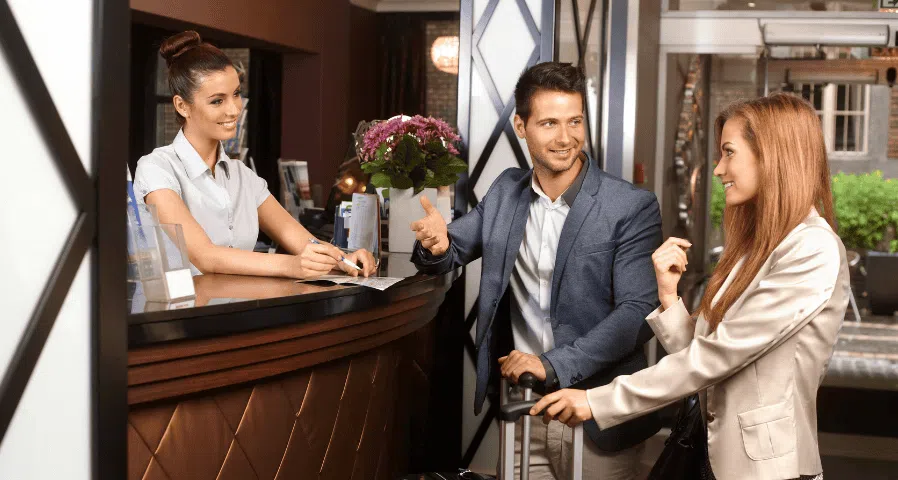Daylighting Controls & Daylight Savings: Optimizing Natural Light Through the…
Studies have shown that natural lighting has proven to improve workplaces by helping employees be more…

Guests arrive at hotels for an unforgettable experience and exceptional service. Brands strategically craft their design to optimize how the space feels, functions, and flows. Lighting plays a critical role throughout hospitality to help set the mood while remaining operational for staff. Nowhere is this more critical than in hotel restaurants and bars, where lighting directly influences atmosphere, perception, and guest comfort.
This article explores the core principles of hotel lighting and dives deep into how hotel bar lighting and hotel restaurant lighting contribute to comfort and ambiance.
A successful hospitality lighting plan uses a layered approach to build visual depth, enhance functionality, and create emotional impact. The primary types of lighting include:
Ambient Lighting: The general lighting provides overall illumination for a space. It sets the base tone and ensures visibility. Common sources include recessed lighting, ceiling fixtures, and pendant lights.
Task Lighting: Designed to illuminate specific functions, task lighting enhances clarity and focus. In hospitality, this may include lighting at reception desks, reading lamps in guest rooms, or focused lighting at tables in dining areas.
Accent Lighting: Used to draw attention to architectural features, art, or décor, accent lighting adds sophistication and drama. In bars and restaurants, accent lighting highlights liquor displays, menu boards, and featured design elements.
Decorative Lighting: These fixtures serve an aesthetic purpose while illuminating the space. Chandeliers, designer sconces, and statement pendants fall into this category, often becoming focal points in lobbies or dining rooms.
Designing lighting for guest comfort means blending technical requirements with emotional impact. Several design concepts help achieve this goal:
Hotel bar lighting requires a delicate balance between ambiance and functionality. These social spaces often double as evening lounges, networking zones, and casual meeting spots, making lighting a core component of the guest experience.
When executed well, hotel bar lighting elevates the experience, reinforces the brand’s style, and promotes social engagement.
Hotel restaurant lighting must appeal to the senses and serve the diverse dining needs, from bright breakfasts to moody evening meals. Lighting impacts how guests perceive their food, their mood, and the pace of their dining experience.
Studies have shown that diners eat more slowly and enjoy meals longer under warm, low lighting, making hotel restaurant lighting an essential ingredient for a satisfying dining experience.
While hotel bar and restaurant lighting are a priority, their design should match the rest of the property to give a cohesive experience. Hotel lighting design plays a critical role in the brand’s identity and the experience it wishes to give its guests, guiding them throughout the hotel. This includes seamless transitions from lobby to lounge, from guestroom to dining area.
When done thoughtfully, lighting guides behavior, encourages comfort, and elevates the hotel’s personality.
Hospitality lighting shapes the guest’s journey from check-in to the last call. By focusing on the design nuances of hotel bar and restaurant lighting, hoteliers can deliver more than just ambiance; they can offer moments that leave lasting impressions.
Whether your goal is to create a quiet corner for cocktails or an energizing morning breakfast spot, lighting is the tool that sets the tone. When aligned with thoughtful design, lighting for guest comfort becomes the subtle, guiding element that makes every guest feel welcome.
Action Services Group offers expert advice on upgrading lighting in any industry! If you’re interested in upgrading your lighting design at your hotel call 610-558-9773, emailing [email protected], or schedule a call that fits your needs by clicking the button below.
2 Responses